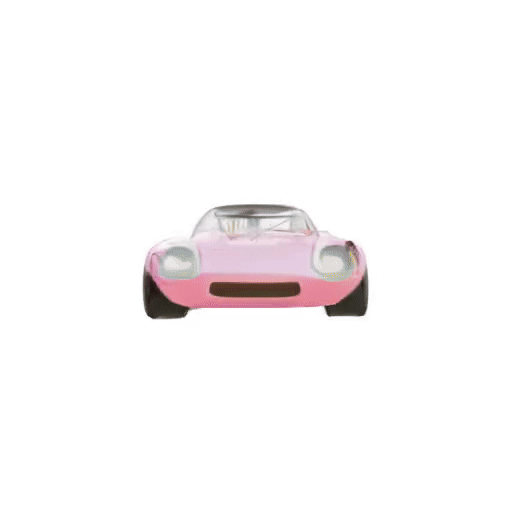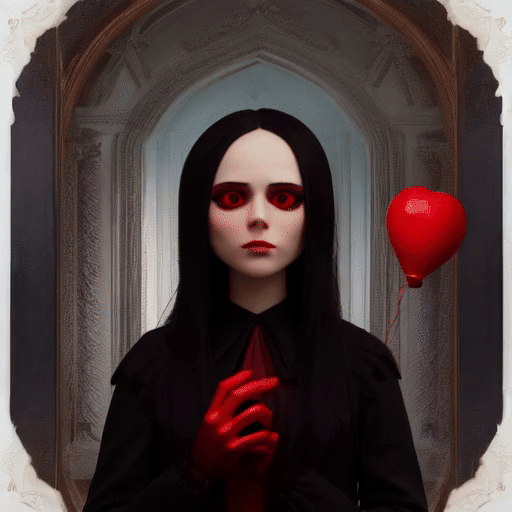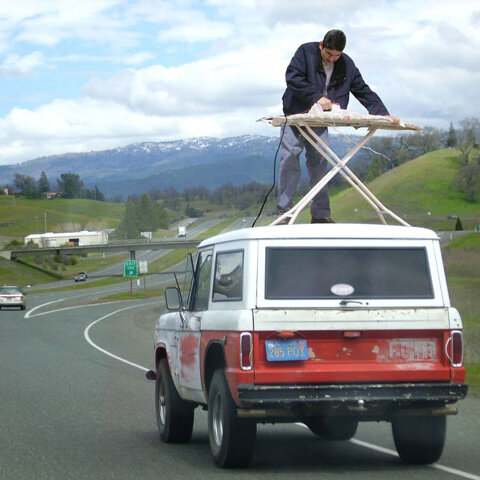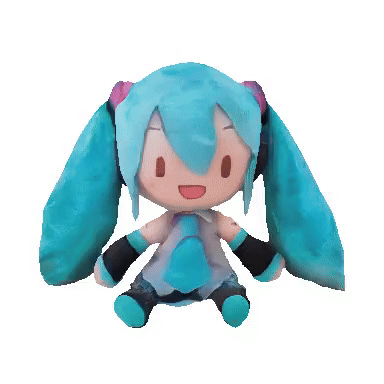lgm
Maintainer: camenduru

3

| Property | Value |
|---|---|
| Run this model | Run on Replicate |
| API spec | View on Replicate |
| Github link | View on Github |
| Paper link | View on Arxiv |
Create account to get full access
Model overview
The lgm model is a Large Multi-View Gaussian Model for High-Resolution 3D Content Creation developed by camenduru. It is similar to other 3D content generation models like ml-mgie, instantmesh, and champ. These models aim to generate high-quality 3D content from text or image prompts.
Model inputs and outputs
The lgm model takes a text prompt, an input image, and a seed value as inputs. The text prompt is used to guide the generation of the 3D content, while the input image and seed value provide additional control over the output.
Inputs
- Prompt: A text prompt describing the desired 3D content
- Input Image: An optional input image to guide the generation
- Seed: An integer value to control the randomness of the output
Outputs
- Output: An array of URLs pointing to the generated 3D content
Capabilities
The lgm model can generate high-resolution 3D content from text prompts, with the ability to incorporate input images to guide the generation process. It is capable of producing diverse and detailed 3D models, making it a useful tool for 3D content creation workflows.
What can I use it for?
The lgm model can be utilized for a variety of 3D content creation tasks, such as generating 3D models for virtual environments, game assets, or architectural visualizations. By leveraging the text-to-3D capabilities of the model, users can quickly and easily create 3D content without the need for extensive 3D modeling expertise. Additionally, the ability to incorporate input images can be useful for tasks like 3D reconstruction or scene generation.
Things to try
Experiment with different text prompts to see the range of 3D content the lgm model can generate. Try incorporating various input images to guide the generation process and observe how the output changes. Additionally, explore the impact of adjusting the seed value to generate diverse variations of the same 3D content.
This summary was produced with help from an AI and may contain inaccuracies - check out the links to read the original source documents!
Related Models

ml-mgie

5
ml-mgie is a model developed by Replicate's Camenduru that aims to provide guidance for instruction-based image editing using multimodal large language models. This model can be seen as an extension of similar efforts like llava-13b and champ, which also explore the intersection of language and visual AI. The model's capabilities include making targeted edits to images based on natural language instructions. Model inputs and outputs ml-mgie takes in an input image and a text prompt, and generates an edited image along with a textual description of the changes made. The input image can be any valid image, and the text prompt should describe the desired edits in natural language. Inputs Input Image**: The image to be edited Prompt**: A natural language description of the desired edits Outputs Edited Image**: The resulting image after applying the specified edits Text**: A textual description of the edits made to the input image Capabilities ml-mgie demonstrates the ability to make targeted visual edits to images based on natural language instructions. This includes changes to the color, composition, or other visual aspects of the image. The model can be used to enhance or modify existing images in creative ways. What can I use it for? ml-mgie could be used in various creative and professional applications, such as photo editing, graphic design, and even product visualization. By allowing users to describe their desired edits in natural language, the model can streamline the image editing process and make it more accessible to a wider audience. Additionally, the model's capabilities could potentially be leveraged for tasks like virtual prototyping or product customization. Things to try One interesting thing to try with ml-mgie is providing more detailed or nuanced prompts to see how the model responds. For example, you could experiment with prompts that include specific color references, spatial relationships, or other visual characteristics to see how the model interprets and applies those edits. Additionally, you could try providing the model with a series of prompts to see if it can maintain coherence and consistency across multiple editing steps.
Updated Invalid Date

animate-lcm

1
The animate-lcm model, developed by camenduru, is a cartoon-style 3D animation model. It is capable of generating cartoon-like 3D animations from text prompts. The model draws inspiration from similar 3D animation models like LGM, Champ, and AnimateDiff-Lightning, which also aim to create 3D animated content from text. Model inputs and outputs The animate-lcm model takes in a text prompt as input and generates a 3D animation as output. The input prompt can describe the desired scene, character, and animation style, and the model will attempt to create a corresponding 3D animation. Inputs Prompt**: A text description of the desired scene, character, and animation style. Width**: The width of the output image in pixels. Height**: The height of the output image in pixels. Video Length**: The length of the output animation in number of frames. Guidance Scale**: A parameter controlling the strength of the text prompt in guiding the animation generation. Negative Prompt**: A text description of elements to exclude from the output. Num Inference Steps**: The number of steps to use when generating the animation. Outputs Output**: A 3D animated video file generated based on the input prompt. Capabilities The animate-lcm model is capable of generating cartoon-style 3D animations from text prompts. It can create a wide variety of animated scenes and characters, from cute animals to fantastical creatures. The animations have a distinctive hand-drawn, sketchy aesthetic. What can I use it for? The animate-lcm model can be used to quickly generate 3D animated content for a variety of applications, such as short films, social media posts, or video game assets. Its ability to generate animations from text prompts makes it a powerful tool for content creators, animators, and designers who want to quickly explore and iterate on different animation ideas. Things to try One interesting aspect of the animate-lcm model is its ability to capture the essence of a prompt in a unique, stylized way. For example, you could try generating animations of the same prompt with different variations, such as changing the guidance scale or negative prompt, to see how the model interprets the prompt differently. You could also experiment with prompts that combine multiple elements, like "a cute rabbit playing in a field of flowers," to see how the model combines these elements into a cohesive animation.
Updated Invalid Date

moe-llava

1.4K
MoE-LLaVA is a large language model developed by the PKU-YuanGroup that combines the power of Mixture of Experts (MoE) and the versatility of Latent Learnable Visual Attention (LLaVA) to generate high-quality multimodal responses. It is similar to other large language models like ml-mgie, lgm, animate-lcm, cog-a1111-ui, and animagine-xl-3.1 that leverage the power of deep learning to create advanced natural language and image generation capabilities. Model inputs and outputs MoE-LLaVA takes two inputs: a text prompt and an image URL. The text prompt can be a natural language description of the desired output, and the image URL provides a visual reference for the model to incorporate into its response. The model then generates a text output that directly addresses the prompt and incorporates relevant information from the input image. Inputs Input Text**: A natural language description of the desired output Input Image**: A URL pointing to an image that the model should incorporate into its response Outputs Output Text**: A generated response that addresses the input prompt and incorporates relevant information from the input image Capabilities MoE-LLaVA is capable of generating coherent and informative multimodal responses that combine natural language and visual information. It can be used for a variety of tasks, such as image captioning, visual question answering, and image-guided text generation. What can I use it for? You can use MoE-LLaVA for a variety of projects that require the integration of text and visual data. For example, you could use it to create image-guided tutorials, generate product descriptions that incorporate product images, or develop intelligent chatbots that can respond to user prompts with relevant visual information. By leveraging the model's multimodal capabilities, you can create rich and engaging content that resonates with your audience. Things to try One interesting thing to try with MoE-LLaVA is to experiment with different types of input images and text prompts. Try providing the model with a wide range of images, from landscapes and cityscapes to portraits and abstract art, and observe how the model's responses change. Similarly, experiment with different types of text prompts, from simple factual queries to more open-ended creative prompts. By exploring the model's behavior across a variety of inputs, you can gain a deeper understanding of its capabilities and potential applications.
Updated Invalid Date

instantmesh

33
InstantMesh is an efficient 3D mesh generation model that can create realistic 3D models from a single input image. Developed by researchers at Tencent ARC, InstantMesh leverages sparse-view large reconstruction models to rapidly generate 3D meshes without requiring multiple input views. This sets it apart from similar models like real-esrgan, instant-id, idm-vton, and face-to-many, which focus on different 3D reconstruction and generation tasks. Model inputs and outputs InstantMesh takes a single input image and generates a 3D mesh model. The model can also optionally export a texture map and video of the generated mesh. Inputs Image Path**: The input image to use for 3D mesh generation Seed**: A random seed value to use for the mesh generation process Remove Background**: A boolean flag to remove the background from the input image Export Texmap**: A boolean flag to export a texture map along with the 3D mesh Export Video**: A boolean flag to export a video of the generated 3D mesh Outputs Array of URIs**: The generated 3D mesh models and optional texture map and video Capabilities InstantMesh can efficiently generate high-quality 3D mesh models from a single input image, without requiring multiple views or a complex reconstruction pipeline. This makes it a powerful tool for rapid 3D content creation in a variety of applications, from game development to product visualization. What can I use it for? The InstantMesh model can be used to quickly create 3D assets for a wide range of applications, such as: Game development: Generate 3D models of characters, environments, and props to use in game engines. Product visualization: Create 3D models of products for e-commerce, marketing, or design purposes. Architectural visualization: Generate 3D models of buildings, landscapes, and interiors for design and planning. Visual effects: Use the generated 3D meshes as a starting point for further modeling, texturing, and animation. The model's efficient and robust reconstruction capabilities make it a valuable tool for anyone working with 3D content, especially in fields that require rapid prototyping or content creation. Things to try One interesting aspect of InstantMesh is its ability to remove the background from the input image and generate a 3D mesh that focuses solely on the subject. This can be a useful feature for creating 3D assets that can be easily composited into different environments or scenes. You could try experimenting with different input images, varying the background removal settings, and observing how the generated 3D meshes change accordingly. Another interesting aspect is the option to export a texture map along with the 3D mesh. This allows you to further customize and refine the appearance of the generated model, using tools like 3D modeling software or game engines. You could try experimenting with different texture mapping settings and see how the final 3D models look with different surface materials and details.
Updated Invalid Date